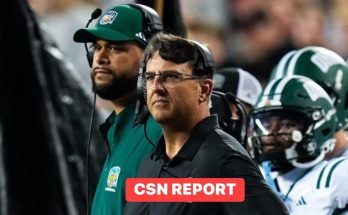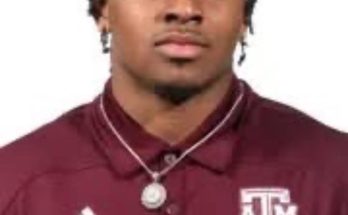The world of college basketball recruiting is filled with twists and turns, and for Duke University, a school synonymous with basketball excellence, each recruiting cycle brings with it a fresh wave of stories, speculations, and shifting decisions. One such story that’s begun to ripple through the college basketball landscape involves a nearby high-profile prospect who has decided to transfer—an unexpected move that could have significant implications for Duke’s recruitment strategy and the broader college basketball scene.
The prospect in question, who had been widely considered a strong potential target for Duke, had not yet officially committed but was on the Blue Devils’ radar for more than a year. Coaches were in regular contact. Scouting trips were made. His high school games drew attention not just from Duke, but from other powerhouse programs as well. His proximity to Durham, North Carolina—less than a two-hour drive—made him a particularly attractive prospect for Duke’s staff, who value not just talent but also the potential for building strong relationships with players’ families and local communities. Now, with the news of his transfer, everything is shifting.
While the name of the school he is transferring to is yet to be formally announced, early reports suggest that the move could take him out of the state and into a high-level prep program, one known for producing top-tier Division I athletes. This kind of move has become more common in recent years, as elite high school players seek better competition, more exposure, and a national platform that helps them secure their spot in the ever-competitive recruiting rankings. For the player, it’s a strategic step toward college stardom. For Duke, it raises questions.
Why did he decide to transfer now, and what does this mean for Duke’s recruiting plans moving forward? Sources close to the situation point to several contributing factors. For one, the player’s current high school situation may not have provided the level of development or exposure he and his camp were hoping for. Despite strong local support and impressive performances on the court, there’s a growing sense that to reach the next level—national rankings, McDonald’s All-American considerations, NIL opportunities—he needs to face tougher competition and be seen by a broader audience.
From a Duke perspective, this transfer complicates things. While the Blue Devils have one of the strongest brands in all of college sports and a rich history of developing NBA-caliber players, they also compete in a space where every detail matters. Proximity used to be a tactical advantage. It allowed frequent visits, easier scouting, and a more intimate recruitment process. When a prospect transfers to a school across the country, or even just to a different region, that intimacy becomes harder to maintain.
Moreover, the transfer may open the door to other programs that weren’t previously in the picture. Duke often finds itself battling with schools like Kentucky, North Carolina, Kansas, and Michigan State for top recruits. But now, depending on where the player lands, other programs—particularly West Coast schools or those with strong prep connections—may gain traction. Suddenly, what looked like a comfortable lead in a local recruitment battle becomes a full-on national war.
Still, Duke is no stranger to these challenges. Under head coach Jon Scheyer, the Blue Devils have leaned into modern recruiting strategies, balancing relationships with elite high school talent and the evolving world of the NCAA transfer portal. This recent development could simply mean a recalibration. If the prospect remains interested in Duke despite his transfer, the staff will continue its pursuit. If not, Duke has always had a backup plan—or several.
The timing of the move is also critical. With the summer AAU circuit in full swing and college coaches making their final assessments before the next wave of offers and commitments, this transfer could boost the player’s profile significantly. Playing in a higher-tier league or more competitive prep environment could result in a meteoric rise in national rankings. For Duke, it means keeping close tabs on how he performs against elite competition and deciding whether to double down on their pursuit or pivot to other targets.
Fans and analysts are already speculating about how this affects Duke’s 2025 and 2026 recruiting classes. The Blue Devils have some top-tier talent already lined up, and Scheyer’s recruiting ability has shown no signs of decline since he took over from Mike Krzyzewski. However, in today’s college basketball climate, no commitment is ever truly secure until ink meets paper. With NIL playing a larger role than ever, players now consider far more than tradition and coaching when choosing their school. Brand visibility, social media opportunities, and professional development all factor into these decisions. A transfer to a major prep program could position this prospect for a more lucrative college career—whether that ends up being at Duke or somewhere else remains to be seen.
There’s also a more human side to this story. Transferring high schools is not an easy decision for a teenager. It involves leaving behind friends, coaches, teammates, and a support network that likely helped shape his early basketball journey. Families must weigh not only the athletic upside but also the emotional toll. For this particular player, whose family has deep roots in the local area, the decision to leave was reportedly not made lightly. But in the modern sports world, where careers can pivot on visibility and timing, sometimes these tough decisions become necessary.


